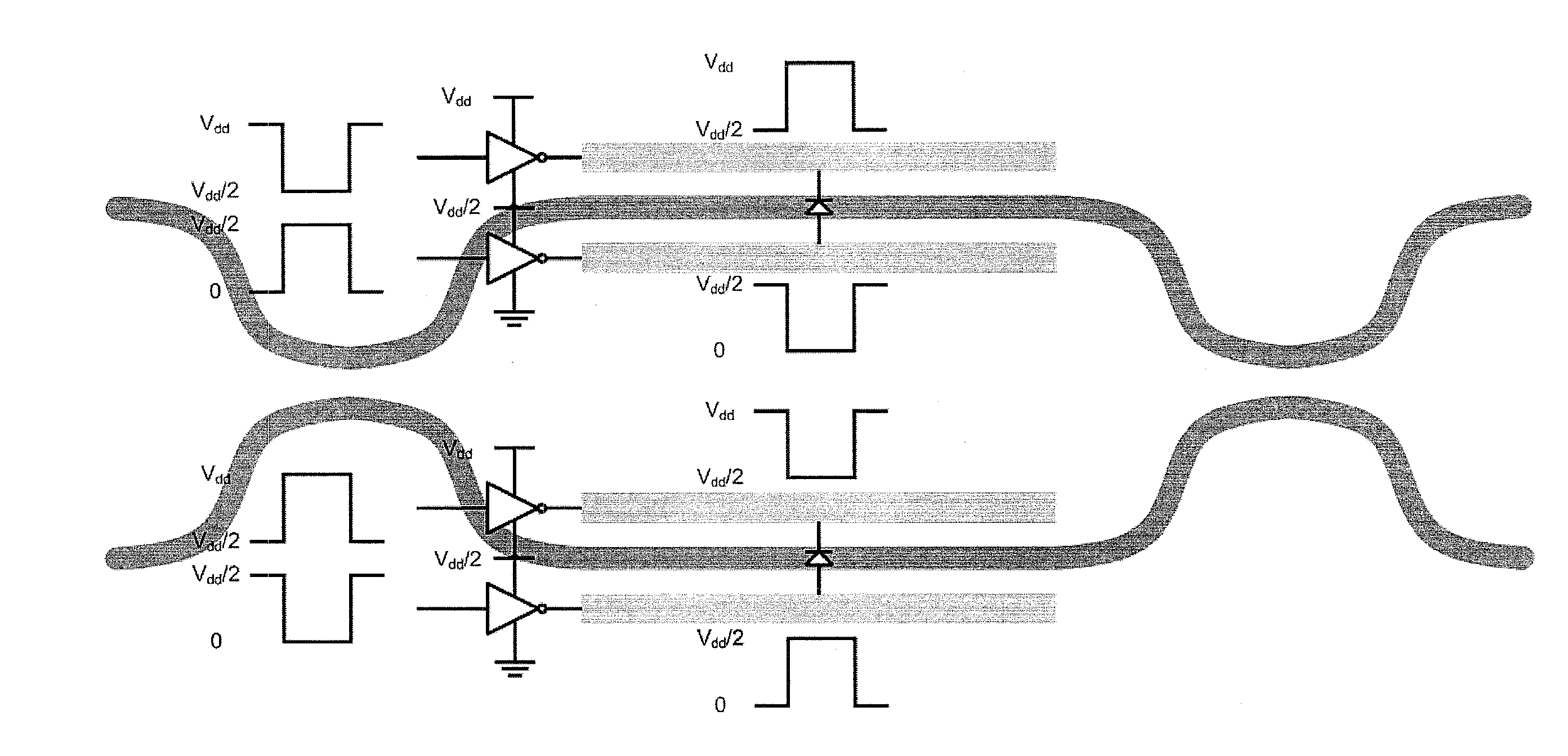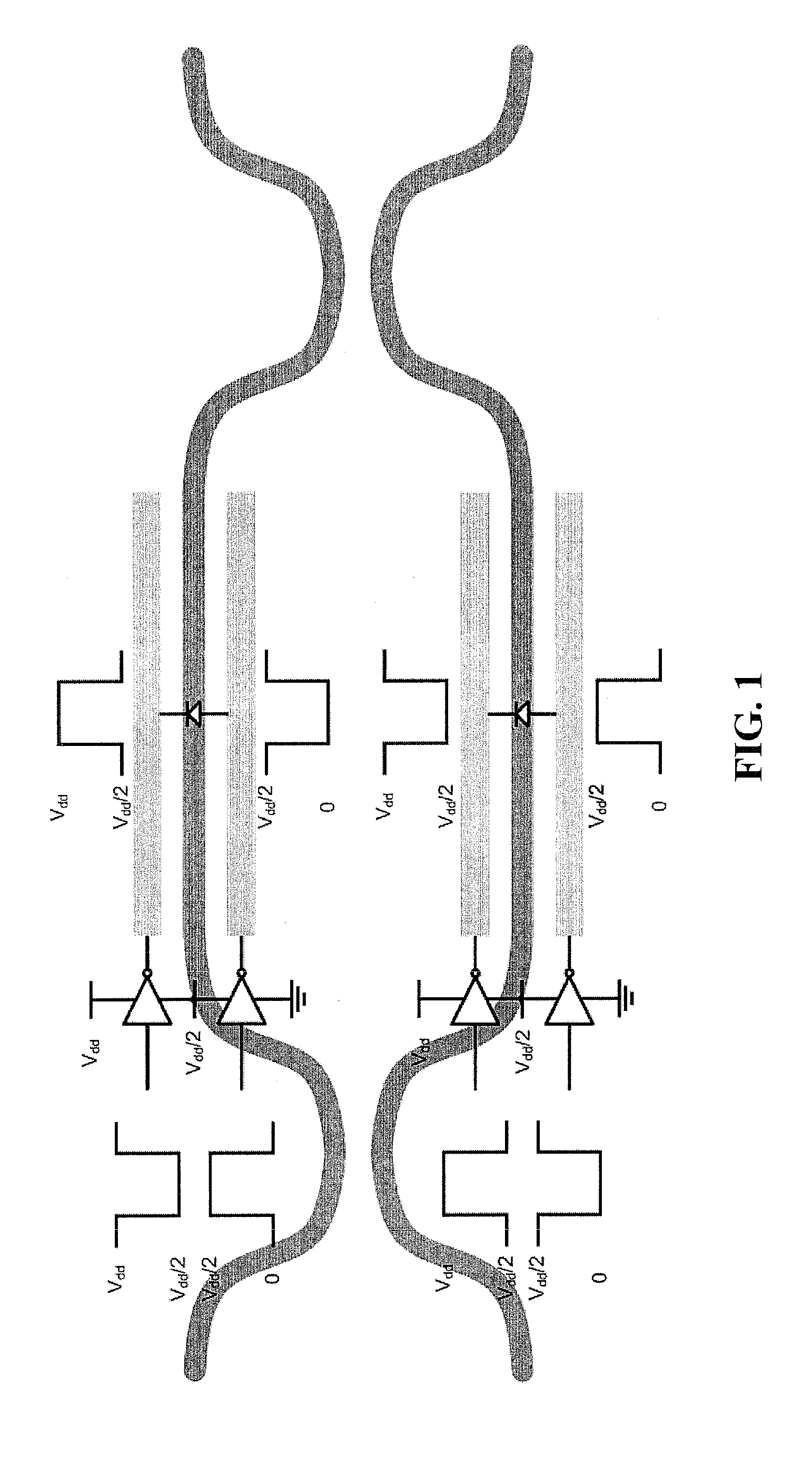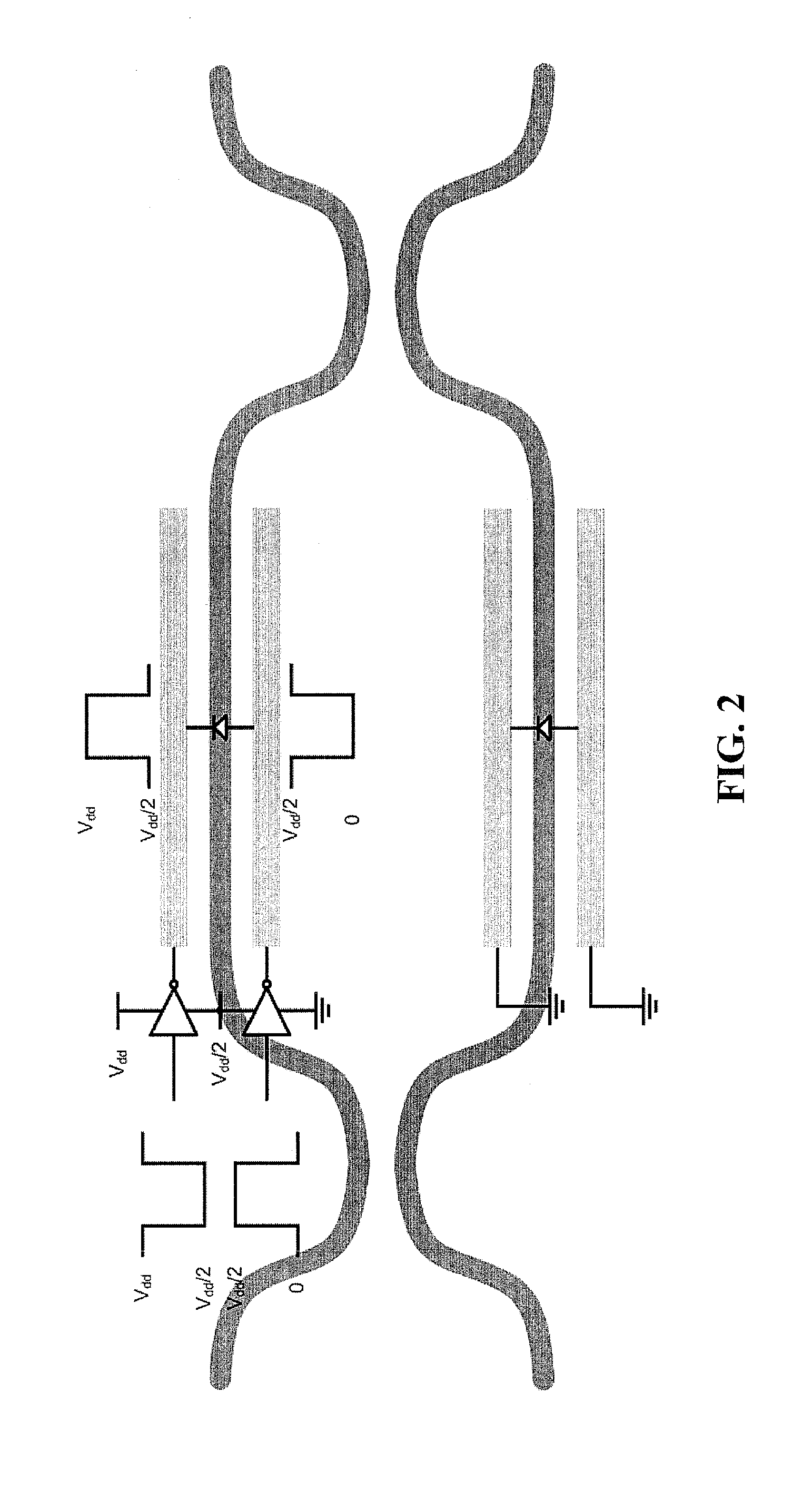Electro-optical modulator interface
a technology of optical modulator and interface, applied in the direction of optics, instruments, electrical equipment, etc., can solve the problems of tens of ghz relying on relatively expensive, subject to safe operating area (soa) issues, etc., and achieve the effect of low cost, low cost and low cost of such devices
- Summary
- Abstract
- Description
- Claims
- Application Information
AI Technical Summary
Benefits of technology
Problems solved by technology
Method used
Image
Examples
Embodiment Construction
[0022]Exemplary embodiments of the driver will be described in a differential configuration, according to which all the four electrodes are driven, with either a lumped or distributed structure. This configuration may be useful, for example, in an MZM where all the four electrodes are driven as depicted in FIG. 1, and it may be more easily converted into a single-ended one, for use in an MZM where only two electrodes are driven as depicted in FIG. 2.
[0023]FIGS. 3a-3d are schematic diagrams of several embodiments of the E-O interface driver of this disclosure. With reference to FIG. 3a, in a case of an OOK input signal on the differential input nodes INP and INM, the driver provides a differential voltage equal to 0 or to Vdd between the two terminals of each load Cload1 and Cload2 (to the cathode and the anode in the case of a reverse biased junction) that are driven as a function of the signal pairs INM_H-INP_L and INP_H-INM_L generated in a pre-driver stage, in phase opposition. E...
PUM
 Login to View More
Login to View More Abstract
Description
Claims
Application Information
 Login to View More
Login to View More - R&D
- Intellectual Property
- Life Sciences
- Materials
- Tech Scout
- Unparalleled Data Quality
- Higher Quality Content
- 60% Fewer Hallucinations
Browse by: Latest US Patents, China's latest patents, Technical Efficacy Thesaurus, Application Domain, Technology Topic, Popular Technical Reports.
© 2025 PatSnap. All rights reserved.Legal|Privacy policy|Modern Slavery Act Transparency Statement|Sitemap|About US| Contact US: help@patsnap.com



